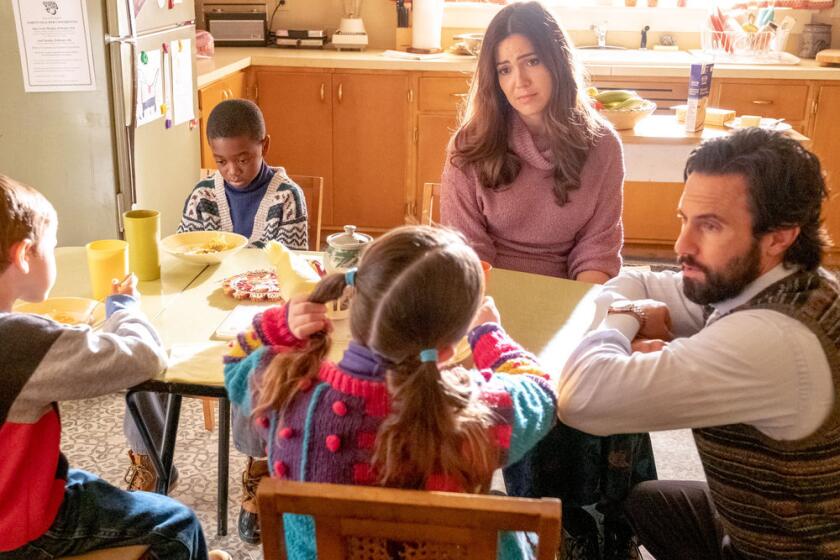‘Parenthood’ told a flawed autism story. This time, Jason Katims vowed to ‘do better’
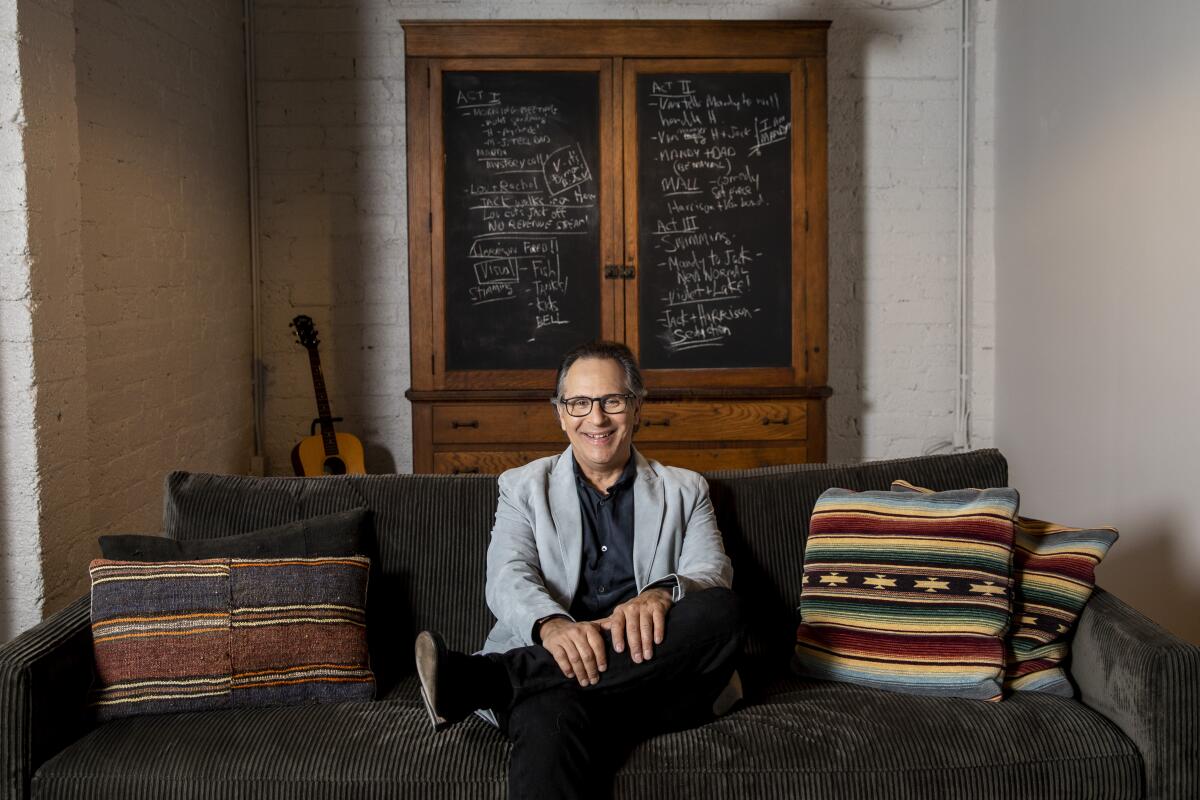
A few years ago, Jason Katims, the TV writer behind shows like “Friday Night Lights” and “Parenthood,” started to think about what adulthood would look like for his maturing son who is on the spectrum.
For the record:
9:02 a.m. Jan. 21, 2022An earlier version of this article misidentified Jason Katims’ son’s first name as Spencer. His name is Sawyer.
“There’s a lot that is written about children with autism, but the idea of adults with autism is less explored,” says Katims, whose son, Sawyer, is 23. “And so I was just there; it was something that I was thinking about in my life, and wondering about, and maybe losing a little sleep about.”
In the months that followed, he began to wonder if it might be subject matter worth exploring on a TV show. Katims has gotten personal in his work before — on “Parenthood” he tackled the complexities of raising a child with high-functioning autism through the character Max Braverman, played by Max Burkholder. Katims’ agent told him about an Israeli show, “On the Spectrum,” and sent three episodes for him to watch.
Hollywood’s most influential showrunners talk with The Times about how they broke into the business, the shifting TV landscape, their writing process and more.
“I watched them the moment I got them and I just felt strongly that this is the show I want to do,” he says. “There’s the old adage to write what you know, right? I had a professor in college who said: Write what you’re learning about. This was a subject matter that I felt, on one hand, I knew a lot about; I felt that I could do it justice. But on the other hand, it was something I was learning about and am learning about. And so it felt like the right thing for me to do.”
Premiering Friday on Amazon, “As We See It” is half-hour dramedy that follows three 20-something roommates — Jack (Rick Glassman), Harrison (Albert Rutecki) and Violet (Sue Ann Pien), who are all on the spectrum — as they navigate the complexities of adulthood and grapple with triumphs and setbacks in their journey toward independence, with assistance from their aide Mandy (Sosie Bacon), Violet’s brother, Van (Chris Pang), and Jack’s dad, Lou (Joe Mantegna).
From his office in Santa Monica, Katims discussed recognizing his limitations in crafting a narrative about what it means to be an adult with autism, his education as a storyteller who tackles the emotional complexities of life, and the last show that made him cry.
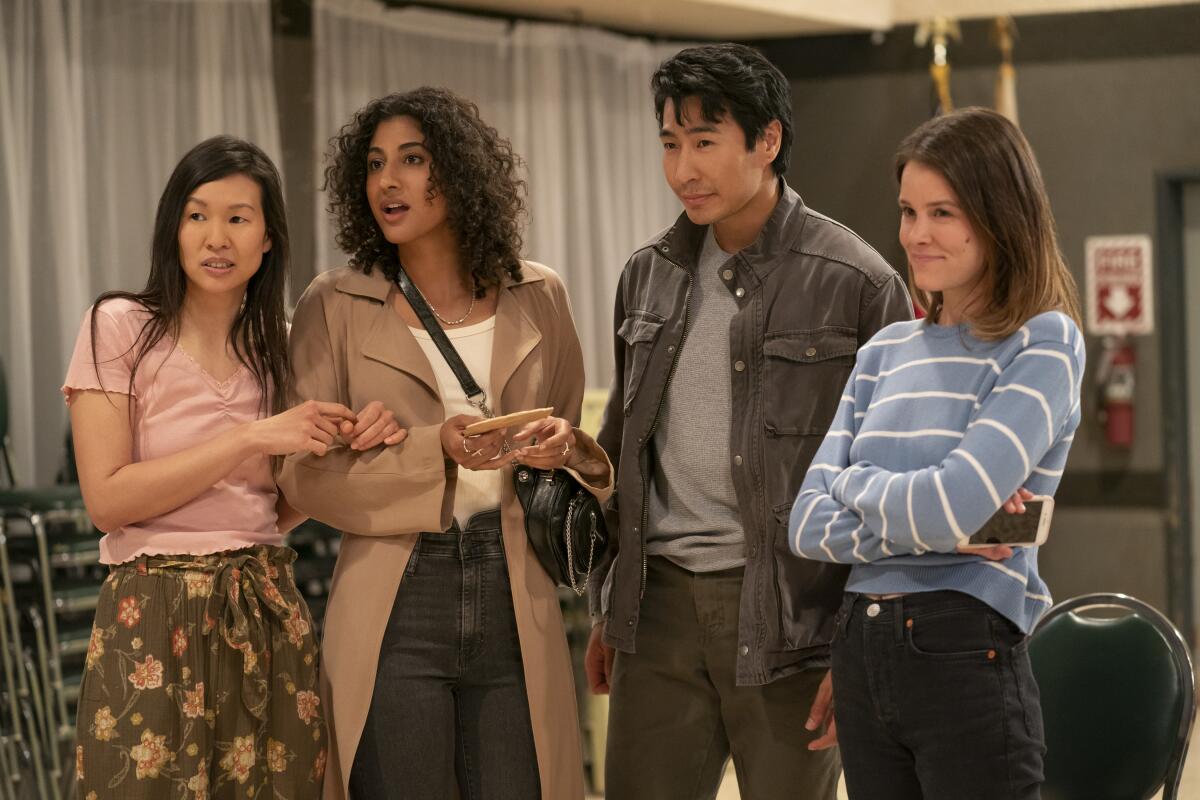
The series’ ‘North Star’
A frequent criticism of shows or films that attempt to shed light and increase visibility of the autism community is the misinformation that persist because the people telling the stories often aren’t living with autism themselves. On “Parenthood,” Max wasn’t portrayed by an actor on the spectrum, and there were no writers who identified as neurodiverse helping to craft his story line. Katims says he was intentional about approaching “As We See It” differently on both sides of the camera.
When Amazon called to pick up the pilot episode, the very first thing that I did was called Cami Patton, who’s a casting director and also has a personal connection to this subject matter, and said, “I want to see if we could cast this show authentically.” The first thing that we did — rather than what you usually do, which is look for a director or producer or production designer — was a search for the three leads of the show, specifically looking for actors who identified themselves as being on the spectrum. And that became our North Star in terms of how we made this show.
While I was writing the script, I reached out to other people that I knew personally; we shared it with organizations like Autism Speaks to get their feedback; Amazon, separately and apart from what I was doing, did their own vetting of everything that we were doing along the way. And having partners on both sides of the camera was also important for us to do. I had neurodiverse voices in the writers room. We also hired neurodiverse people on our crew, so they were in the writers room, the editing room, the production office, the set. We had an advocate, Elaine Hall, who was on the show throughout the process, to work with our actors who are neurodiverse, but also crew members — and maybe as importantly, she worked with me, the producers, the department heads, the crew, the people who might have had questions.
People often say to me, “Was it challenging to work with these actors? What were the challenges?” I didn’t know what to expect; I didn’t know, “Is it going to be challenging?” It was just so incredible. I learned so much from them as we were shooting the show. Learning from them informed what the show became.
We tried to keep our shooting days short. We did try to keep the set as calm and quiet as possible, but it is a TV set. There was one day when I walked onto the set, and we were between takes, and the crew was setting up and people were having conversations and it was a little bit loud and I saw Albert sitting in the corner of the living room setup. He had his hands over his ears because all of it was too much for him. And I observed Sue Ann walked up to him and sat down on the stool next to him, and didn’t say anything to him, but just put her hands over her ears. She wasn’t actually overwhelmed at that moment, but she was there for her fellow actor in a way that was just so beautiful. A few episodes later, I walked onto the set, and it was kind of loud between takes, and I looked to see how Albert was doing and he was singing show tunes; he had become so comfortable in those few weeks or months that we were doing it that there was a spirit of excitement about telling the story.
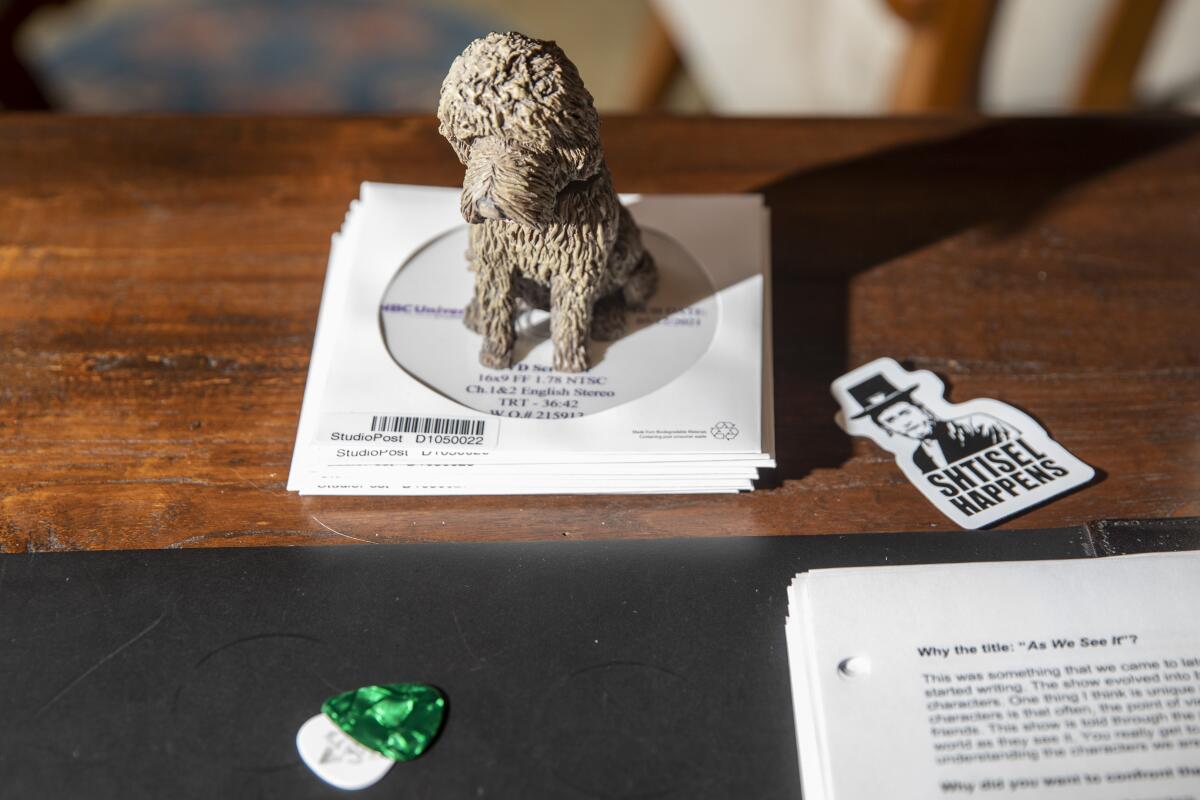
It’s not just the three leads that we tried to cast authentically; any neurodiverse character in the show is played by a neurodiverse actor. And we had two roles that were neurotypical roles that were played by actors with autism. This was something that we that leaned into. There’s millions and millions of dollars that come in to make a show, and I have a lot of responsibility as a producer. I didn’t know what the talent pool was for actors on the spectrum. So the first thing we did when we did that search was to find out. Several days after the search started, Cami, called me up, and she said, “Look, I want to send you an audition.” Now, she never does that. No casting director does that; you collect all the people and you cull through them, and you come in with your best. And she’s like, “I just have to show you this one person,” and it was the first person she saw audition for Violet and it was Sue Ann. I’m sorry, I’m actually weirdly getting emotional now telling the story. I turn on her self-tape and I’m watching it weeping because she’s so brilliant. It’s not like, “Oh, can she pull this off.” It was like, “What is she going to wear to the Emmys?”
I already had done “Parenthood,” which had over 100 episodes, where we did the story about Max Braverman. We didn’t cast that role in this way because at the time, frankly, I didn’t even imagine or think about it. I’m so proud of “Parenthood” and I’m so proud of that story line, but if I’m going to revisit that story line, how do I do better? How do I do more? How do I be braver? And how do I get more help from this community to help me tell the story? Because even though I have a son on the spectrum, even though I know many people on the spectrum, it’s important to have the voices and the point of view of the people who are living it.
The twisty, tearjerking family drama’s sixth and final season premieres Tuesday. Re-live all your favorite moments with our guide.
‘Our secret weapon’
The main characters on “As We See It” are trying to find their place in a world. They’re navigating jobs, trying to find love, figuring out how to make friends, or trying to summon the courage to walk to the end of a block. The stakes are different, but they’re high.
One really good example of what the kinds of stories I wanted to tell is in the first episode when Harrison is having trouble walking out of the apartment. I didn’t know if it was going to work. It’s a pretty small story line when you look at on the page. But when you get to the point where he makes it — to walk down the block, and the triumph, what it means to him and what it means to Mandy, you feel like, well, it might not be like a big story line compared to “Succession,” but it works, it’s moving and it’s deeply human. I knew that in telling these stories, if I’m going to make this show real, it isn’t about them having the kinds of problems or the kinds of progression that we might normally think of when we’re thinking of the moves you would make as a storyteller. We had to keep it realistic, in terms of what kind of relationship they are having, what kind of jobs they are getting, what kind of fears they are experiencing. They had to progress or not progress in true fashion. That was our challenge as storytellers, but it was also our secret weapon as storytellers because it’s all about, as we know, the little things that happen. Life is all about the little things.
I feel like it has the same connective tissue as “Friday Night Lights” and “Parenthood.” Early on, when we were preparing to make the pilot, I was talking to our costume designer, production designer and our director about, like, what would that apartment look like? And don’t put anything on the walls that they wouldn’t put on the walls. It wasn’t like, “Oh, what would look cool?” It was like, “What do they care about?” Sometimes they wouldn’t have anything and they’d have to be brave as productions designers to do that. It was all about, “How do we get that feeling like we were dropped down into this world and we’re there with them?” The experience of “Friday Night Lights” was this feeling as if you’re there: You’re not just observing, you’re with them. You’re one of them.
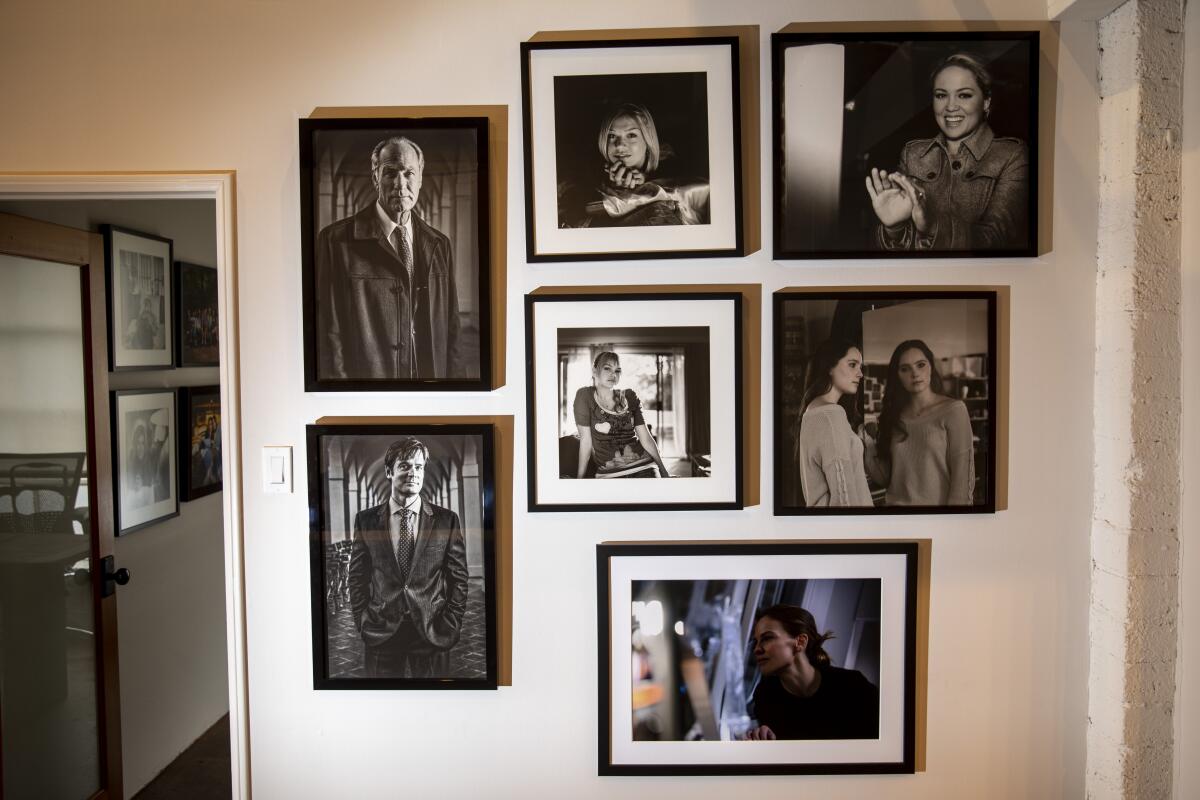
Photos from various shows executive produced by showrunner Jason Katims hang in his Santa Monica office.
‘You need to go deeper’
Born and raised in New York, Katims didn’t have many memories of his parents taking him to see stage productions. But in his early 20s, he saw the 1982 production of Sam Shepard’s “True West” starring a little-known John Malkovich and Gary Sinise. “It was a life-changing experience. I was just, like, this is magic. I want to do this. I want to be part of this,” he says.
Graduating from Queens College having taken one playwriting class, Katims took another at the West Side YMCA and found a playwriting group before eventually putting on plays in black-box theaters. Until Ed Zwick, the co-creator of TV’s popular drama “thirtysomething,” read Katims’ “The Man Who Couldn’t Dance,” a 10-minute play he wrote for the Actors Theatre of Louisville, and came calling. Zwick and his “thirtysomething” creative partner Marshall Herskovitz were developing a new show about teenagers with Winnie Holzman and they were looking for writers. It was named “My So-Called Life.”
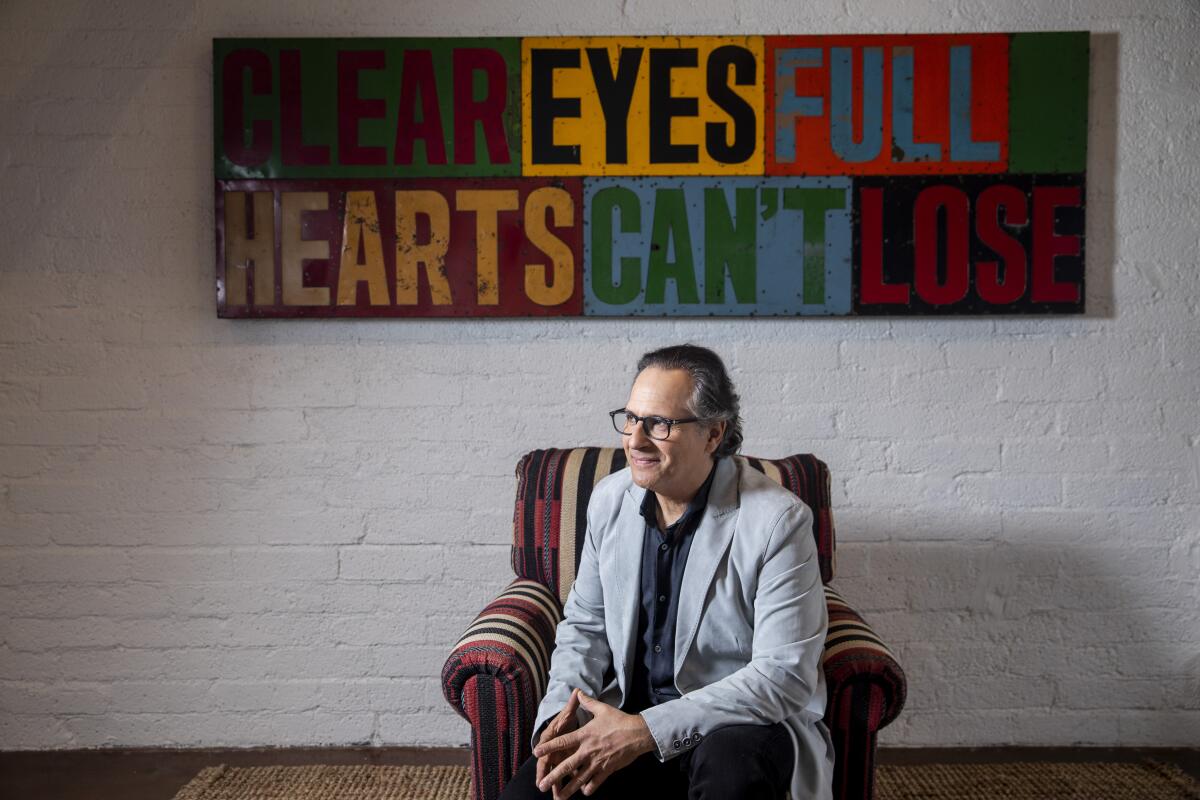
They actually hired me to write a script before the show was picked up, before the pilot was even produced. Handing in my first draft was horrifying. It was clearly my audition to be on the show. I wrote the script the best I could. It was called “The Substitute,” and it was about a substitute teacher [played by Roger Rees] who shows up at school and inspires [Angela, played by Claire Danes] because he’s such a charismatic rebel. But, ultimately, he winds up being this kind of tortured guy. So I was introducing this big guest role, and it’s really hard to do that. To this day, it’s hard to do that. I submitted the script and Marshall [Herskovitz] called me and I remember he said to me: “You need to go deeper.” And I’m thinking to myself, “I went deeper; it’s all I’ve got. It’s not deep enough?” I didn’t really understand how to write it. And so he spent a lot of time with me, hours with me, saying what was not working, what it needed to be, what you needed to feel. I had one rewrite and that was it. I remember, at a certain point, I was trying to remember what he’d said — I was trying to write it exactly as he said so he would like it. And there was this moment where I said, “I’ve just got to make this my own. I just gotta go for it.” Forget everything that was said to me — incorporate it on one level but don’t try to please somebody else. I submitted that script. He read it and his assistant later told me that he finished the script and the first thing he said was, “Let’s shoot this.” That was how I got my job. And, by the way, they didn’t shoot that. A lot of work went into it to make it a 1,000 times better — young writers should know this.

A replica of the “Welcome to Dillon” sign from “Friday Night Lights” that the show’s art department re-created for Jason Katims.
‘It’s free therapy’
Learning from the heavyweights behind character-driven dramas influenced Katims’ brand of storytelling — he’s become known for tackling emotional, family-focused stories in shows like “Friday Night Lights” and “Parenthood.” So when “This Is Us,” a tender family drama on a broadcast network, became one of TV’s biggest hits, some assumed it was another Katims special.
I try to encourage people to think that. When people were like, “Oh, wow, did you do ‘This Is Us’?” I’m like, “Absolutely. Which episode would you like to talk about?” If people say that “Parenthood” helped pave the way for that, what an honor that is. My business are shows like that, so I want those shows to be successful. That’s the kind of show that I want to watch, but also the kind of show that I want to write.
On “Parenthood,” I got to be in a writers room where we needed Kleenex. It’s free therapy. Same thing with “Friday Night Lights,” same thing with “As We See It.” It’s such a privilege to be somebody who tells stories that are just basically about life. If it comes with a little bit of criticism for being sentimental at times, then I accept that criticism. For me, to be in a room where I’m trying to break a crime story from one scene to the other, it just wouldn’t be the right room.
But what’s the last show that made Katims cry?
“Schitt’s Creek,” absolutely. Sounds weird, right? And I didn’t imagine that I would be moved like that. I caught up to it a little bit later than most. That love story with David — from that point on, I thought the show had this incredible combination of being just comfort food and funny and winning, but was so true and moving.
More to Read
The complete guide to home viewing
Get Screen Gab for everything about the TV shows and streaming movies everyone’s talking about.
You may occasionally receive promotional content from the Los Angeles Times.
